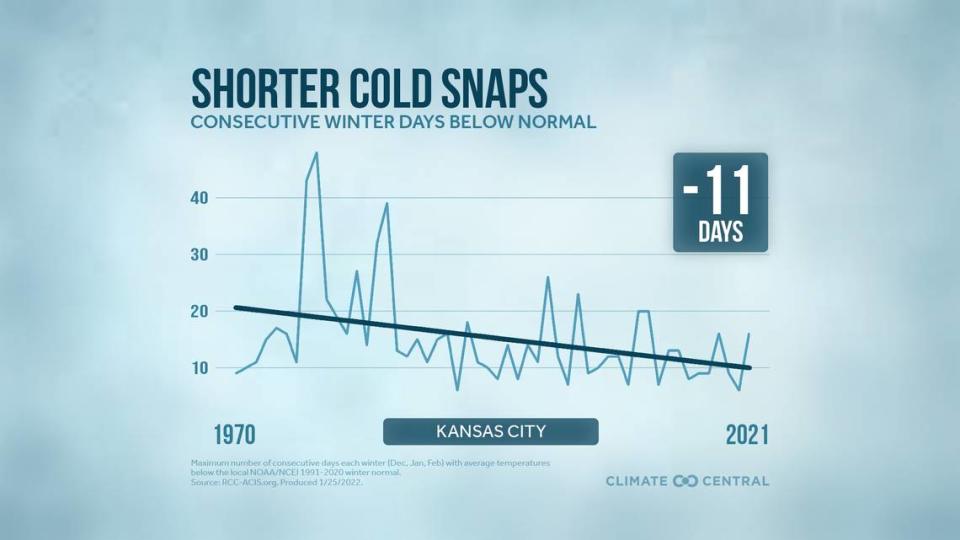Are winters losing their chill in the Kansas City region as the climate changes?
Kansas City’s winters might be losing a bit of their bite, according to a analysis released this week by an independent climate change research organization.
Over the past 50 years, Kansas City has seen the length of its longest cold snaps each winter shrink by 11 days, according to Climate Central.
That doesn’t mean Kansas City will no longer see frigid temperatures, just shorter stretches of days where conditions are below the average temperature of 31.9 degrees, which is considered normal for the winter season in Kansas City.
Of the 244 locations that Climate Central analyzed, 97% had shorter cold snaps from 1970 to 2021. A cold snap is defined as the maximum number of consecutive days each year with temperatures below the 1991-2020 winter normals for that location. At the same time, 98% of the locations saw their annual average temperatures increase.

Cities across the country have seen their longest cold snap shrink by six days on average. Las Vegas has experienced the largest change with a reduction of three weeks. Topeka and and Peoria, Illinois, followed with cold snaps shortened by two weeks, according to Climate Central.
Other cities in the Kansas City region saw a decrease in their longest cold snap too. Columbia and St. Louis saw their cold snaps shrink by 11 days; St. Joseph by 10 days; Wichita, Joplin and Springfield by nine days and Jefferson City by four days.
The shorter periods of cold are another sign of the warming climate, according to Climate Central. Kansas City winters are warming faster than the other three seasons.
Since 1970, the average winter temperature has warmed by 3.4 degrees and the number of winter days above normal has also increased, according to Climate Central.
The consequences of warmer winters and shorter cold snaps could lead to such things as insects like mosquitoes and ticks migrating to locations that previously were too cold and a drop in yields from fruit trees that require the cold to produce fruit the following spring and summer, according to the organization.
Warmer temperatures also can mean that winter storms have more sleet and freezing rain.

 Yahoo Movies
Yahoo Movies 